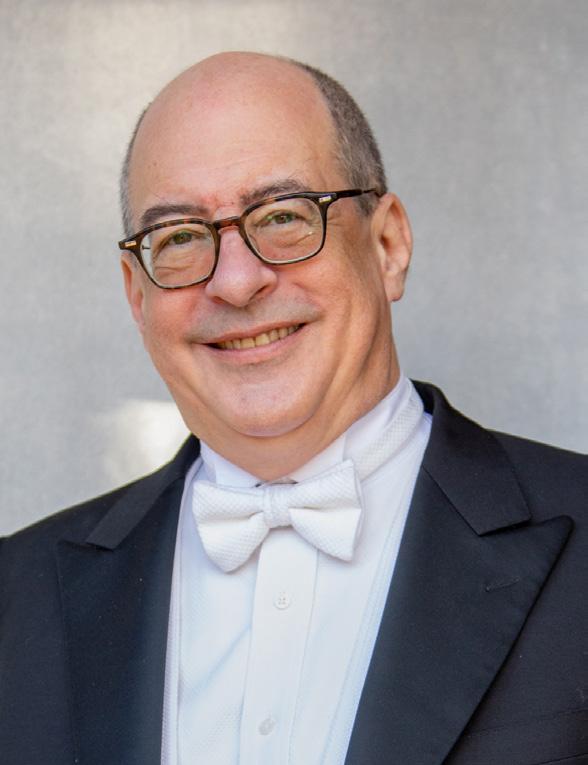
4 minute read
ARTIST PROFILES
Hailed by the Dallas Morning News for his “radiant tone and generous expressivity”, and the Fort Worth Star Telegram for his “musicianship, clear sound, precise intonation, and empathic dynamic levels”, Jake Fridkis has built a reputation as one of the leading flutists of his generation and “a modern day Rampal” (Cvnc.org).
Jake has performed as a concerto soloist in Germany, Italy, France, Brazil, and throughout the United States. He has performed with the Cleveland Orchestra, Philadelphia Orchestra, Pittsburgh Symphony, St. Louis Symphony and as guest principal flute with the Dallas Symphony, Symphony SONG (Korea) and the Norwegian Radio Orchestra including for their tour to the St. Magnus festival in Scotland. In 2022, Jake joined the nine time Emmy Award winning All-Star Orchestra for their fourth season on PBS.
A graduate of the Yale School of Music and recipient of the Nyfenger Award for the top woodwind player in his graduating class, Jake is one of the few musicians to be featured on a top five album on each of Billboard’s Top 200, Classical and Hip Hop and RnB album charts. He has appeared on recordings with The Cleveland Orchestra, The Fort Worth Symphony and with renowned popular artists Drake, Dj Khaled, Roddy Ricch, Ty Dolla $ign and Lecrae among many others. For his work in popular music in 2022 he won a Gospel Music Association Dove Award and was nominated for a Grammy Award.
Highly sought after as an educator, he is currently on the faculty of the Eastern Music Festival. He has taught masterclasses at the Yale School of Music, YoungArts, Cleveland Institute of Music, Depaul School of Music, University of North Texas, Texas Christian University, Houston Flute Society, University of Massachusetts Amherst and the National Flute Association.
Jake currently holds the position of Principal Flute with the Fort Worth Symphony Orchestra, Eastern Music Festival and is a Wm. S. Haynes flutes performing artist.
Roberto Abbado, awarded the prestigious “Premio Abbiati” by the Italian Music Critics Association for his “accomplished interpretative maturity, the extent and the peculiarity of a repertoire where he has offered remarkable results through an intense season”, is Musical Director of Parma’s Festival Verdi. He studied orchestra conducting under Franco Ferrara at the Teatro La Fenice in Venice and at the Accademia Nazionale di Santa Cecilia in Rome, where he was invited – the only student in the history of the Academy – to lead the Orchestra di Santa Cecilia. He made his debut in the United States in 1991 in New York conducting the St. Luke’s Orchestra. Since then he has returned regularly to the US to lead the Symphonic Orchestras of the cities of Boston, Philadelphia, Chicago, Cleveland, Dallas, San Francisco, as well as the Los Angeles Philharmonic, the Saint Paul Chamber Orchestra – of which he is one of the “Artistic Partners”
– working with soloists like Yo-Yo Ma, Midori, Nigel Kennedy, Gil Shaham, Joshua Bell, Hilary Hahn, Vadim Repin, Sarah Chang, Yefim Bronfman, Mitsuko Uchida, Alfred Brendel, Radu Lupu, André Watts, Andras Schiff, Lang-Lang, and Katia and Marielle Labèque.

PROGRAM NOTES : ROBERT SCHUMANN
SYMPHONY No. 4 in D MINOR, Op. 120
I. Ziemlich langsam: Lebhaft
II. Romanze: Ziemlich langsam
III. Scherzo: Lebhaft
IV. Langsam; Lebhaft
DURATION: About 30 minutes
PREMIERED: Düsseldorf, 1853
INSTRUMENTATION: Two flutes, two oboes, two clarinets, two bassoons, four horns, two trumpets, three trombones, timpani, and strings
“Be modest! You have not yet invented nor thought anything which others have not thought or invented before. And should you really have done so, consider it a gift of heaven which you are to share with others.”
by Jeremy Reynolds
Many young couples have tales to tell of difficult fathers-in-law. Pianist Friedrich Wieck, who would — kicking and screaming — become father-in-law to the composer Robert Schumann, was as cliché as it gets, even threatening to shoot the unassuming Robert at one before the wedding.
Wieck’s daughter Clara had demonstrated prodigy-level aptitude at the piano at an early age, and he immediately placed her on a strict course of musical study and practice with a regimen of his own devising. Later, when Robert himself abandoned his study of law and came to study with Wieck, he quickly fell for Clara. Friedrich immediately opposed the union, noting Robert’s shifts of temper, his proneness to alcoholism and his precarious prospects as a composer — not unreasonable concerns — and the pair resorted to sneaking around and sending letters.
SYMPHONY: An elaborate orchestral composition typically broken into contrasting movements, at least one of which is in sonata form.
FURTHER LISTENING:
Schumann: Symphony No. 1 in B-flat major, Op. 38, “Spring”
Violin Sonata No. 2 in D minor, Op. 121 Julius Caesar Overture, Op. 128
It sounds like good fun until, that is, one remembers that the patriarchal laws of the time forbade Clara to marry without her father’s blessing. Schumann had to sue Wieck in the Saxon Court of Appeals, and after a bitter court battle, the pair finally married in 1840. After this, all was bliss for a time. Schumann’s first symphony, the “Spring” symphony, came swiftly, a sunny outpouring of musical affection that took Europe’s musical world by storm, along with more than 100 gorgeous songs for piano and voice. The second symphony — called Symphony No. 4 due to its delayed publication — arrived in 1841, a darker, more intense offering.
The first movement begins with a resounding chord, followed by a questioning, probing tune in bassoons and strings. There’s consternation and drama as the music slowly winds itself into knots, accelerating until a great burst of stormy melody explodes from the strings. From here, it’s off to the races, a mix of contrapuntal writing and fierce orchestral effects, brass and bass instruments blasting at particularly tempestuous moments.
Continued on Page 23








